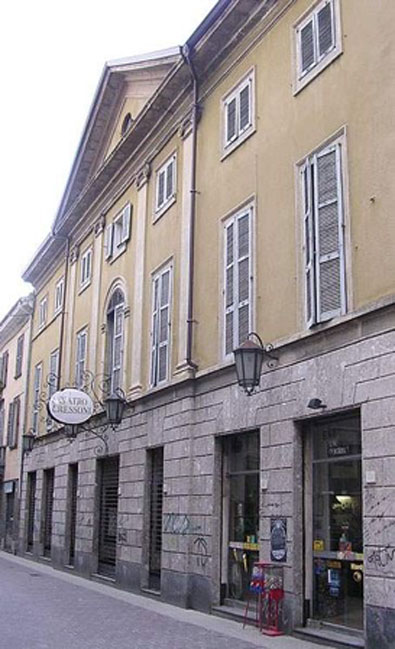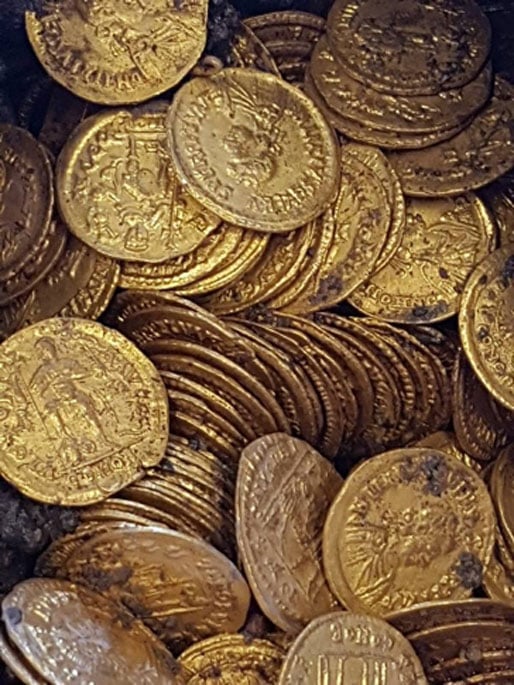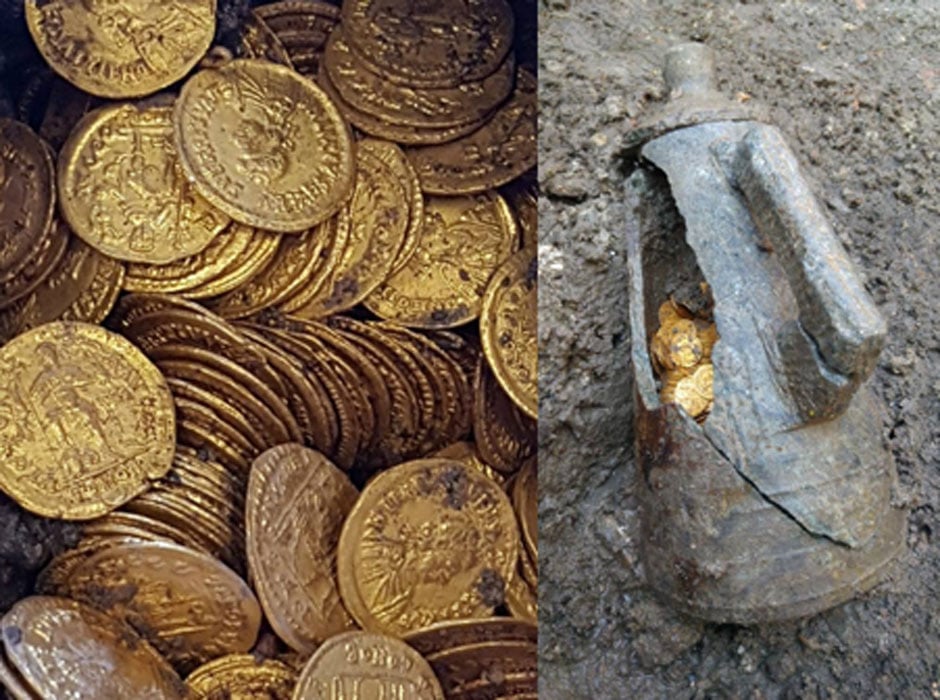Theatre of Treasure: Roman Gold Coins Found in Northern Italy ‘Could Be Worth Millions’
The Italian Minister for Culture has announced a stunning discovery in Northern Italy. Hundreds of Roman gold coins have been unearthed at the site of an old theatre in Como and the Italian Press has speculated they could be worth millions of euros. The number of coins and their quality is amazing experts and the discovery has been hailed as a significant find. It is believed that the coins will help experts to better understand the Later Roman Empire.
The find at Como
The coins were unearthed in Como which was the site of an important Roman town called Novum Comum. The town was originally a Roman colony and was greatly expanded by Julius Caesar who visited it after the Gallic Wars during his march on Rome. He drained a nearby swamp and later bestowed Roman citizenship on the inhabitants. Soon the town began to flourish, and it was at the center of some important trade routes. Como later became an important medieval city.
- Finders of Killingholme Treasure Hoard Make a Mint
- Ten Spectacular Golden Treasures of the Ancient World
- Hidden hoard of more than 6,000 silver coins found in forest in Poland

The now unremarkable looking Cressoni Theatre building. (CC BY-SA 3.0)
The discovery at the theatre
The find was made by workers in the basement of the old Cressoni theatre in Como which was being renovated. They came across what looked like a container in the foundation of the theatre and they decided to alert the relevant authorities, which is required by Italian law. The theatre was built in 1870 and had in turn been converted into a luxury home and a cinema, but it had been empty since 1997. The Archaeology News Network has reported that the ‘authorities now plan to suspend work at the site to allow further excavations.’

The discovery was made in the basement floor of a private house. (Image: MiBAC)
Experts investigated the stone container and soon established that it was a Roman-era amphora, which was widely used in the classical world. The archaeologists decided to leave the amphora in situ but they were able to remove some of the vessel, which is made of soapstone. To their amazement, they found hundreds of gold coins. The coins were all neatly stacked on top of each other.
- Divers find largest golden coin hoard ever discovered in Israel
- Not Just at The End of Rainbows: 15th Century Pot of Gold Found in a Drain Pipe in the Netherlands
- A Staggering 5.6 Tons of Coins Are Unearthed in China and Archaeologists Struggle to Fathom Who Hid Them

Amazed workers found the amphora stacked with gold coins. (Image: MiBAC)
The decision was taken to leave the amphora in the ground. Experts removed some 27 coins for further investigation. It was also decided not to break the amphora and remove the contents, (although it looks pretty damaged in the photos). According to the Indian Express, this was ‘because there is a need to do a stratigraphical examination’. This will allow experts to understand the context of the discovery and the nature of the original site where the amphora was deposited.

Hundreds of gold coins were found. (Image: MiBAC)
An examination of the coins that have been removed has found that they date back to the late 5 th century. The belief is that the coins could be worth many millions of euros if they were sold at auction. Why the coins were buried and left there is not known, but the 5 th century was the period when the Western Roman Empire was collapsing and Germanic invaders were overrunning Italy. The coins may have been hidden from the invaders and their owner may have been killed leaving the treasure forgotten.
It is expected that when a full archaeological survey has been completed in the area where the coins were found that they will be fully removed and investigated. The Minister for Culture has stated that, ‘we do not yet know in detail the historical and cultural significance of this discovery but this area is a real treasure for our archaeology," according to the Local.ie.
The Importance of the find
The coins are very precious and they are a real treasure as they will help the academic community to understand Roman coinage from the late Imperial period. They will also provide us with information on the late 5 th century, which was a time of chaos in Italy. It is expected that the coins will reveal much about the history of the late Roman Empire. For example, they could reveal the likenesses of Roman Emperors and how they styled themselves. The discovery of the coins will no doubt prompt further archaeological investigations in the area.
Top image: Roman gold coins found in an amphora in Como, Italy. Source: MiBAC
By Ed Whelan

















